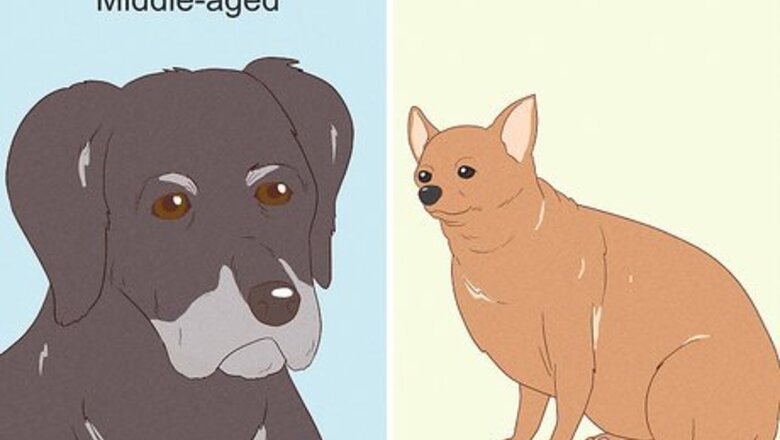
views
What causes fatty tumors (lipomas) in dogs?
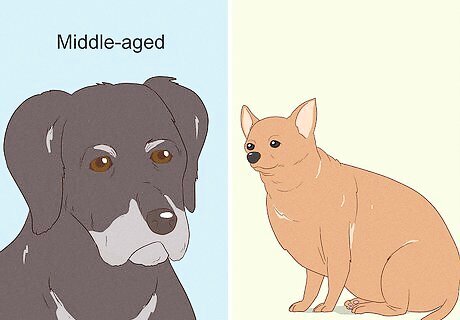
Dogs that are middle-aged and overweight are susceptible to lipomas. Lipomas are benign (non-cancerous) tumors commonly seen in older dogs since their immune systems aren’t as robust as they used to be. Lipomas are really just accumulations of fat cells right under the skin, so they're very common in overweight dogs, too. Other contributing factors include: Poor diet (especially processed kibble) Exposure to pesticides, herbicides, and certain medications
How do I know if the tumor is a lipoma?
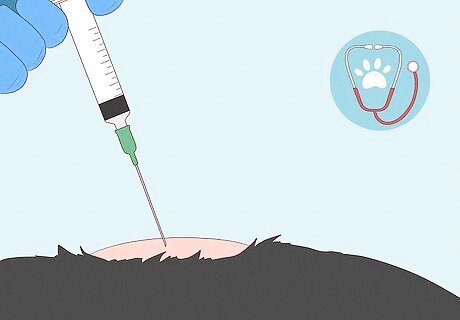
We recommend getting an official diagnosis from a vet. Your vet will take a small needle with a syringe, suck a few cells directly from the tumor, and look at the cells under a microscope to make sure the tumor isn’t cancerous. The procedure is quick, painless, and relatively inexpensive, so it’s worth doing just to make sure. In some cases, a biopsy is recommended for making sure the lipoma isn't cancerous. Some lipomas can have other cancer cells within them. So, they should always be evaluated and measured and routinely checked.
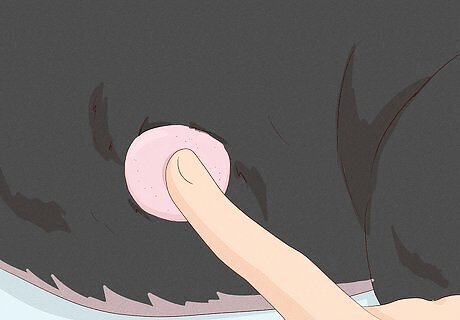
A lipoma feels soft and moves around easily when you push on it. Lipomas aren't attached to anything under your dog’s skin, so the lump should move easily and feel squishy. Lipomas usually don’t cause your dog any pain, so it won’t mind if you touch it! That said, if a lipoma gets really large or grows in an awkward place (like your dog’s eyelid), it may cause some discomfort. Lipomas are slow-growing, so if a large mass suddenly appears on your dog, go in for a vet checkup.
Do fatty tumors need to be removed?

Lipomas are harmless, so surgical removal is unnecessary. It can be alarming to see a growth on your dog, but in most cases you don’t need to be concerned about a lipoma. Vets don’t recommend getting surgery unless the tumor is bothering your dog or limiting its range of motion. Since natural remedies and lifestyle changes can help shrink the tumor, vets suggest trying those before resorting to surgery. Never attempt to cut off your dog's tumor on your own. Lipomas also can't be drained like a cyst, so don't puncture it. This could lead to infection (making surgical removal necessary).
Natural Ways to Shrink Fatty Tumors

Apply 1 drop of neem oil to the tumor twice daily for 30 days. Using neem oil topically works well because the fatty tumor is directly under your dog’s skin. Just apply a single drop directly to the tumor and rub it in gently. Repeat this twice a day for a month and monitor the tumor’s size. If the tumor starts to shrink, continue applying the neem oil, as needed. Neem oil is a naturally-derived oil that may help decrease cell reproduction and reduce the number of existing cells.

Apply 1-2 drops of castor oil directly to the tumor twice a day. Castor oil is known for its anti-inflammatory properties and may also shrink tumor cells. It’s absorbed topically, just like neem oil, and it’s extremely safe to use. If your dog doesn’t respond to neem oil, switch to castor oil and see if that helps.
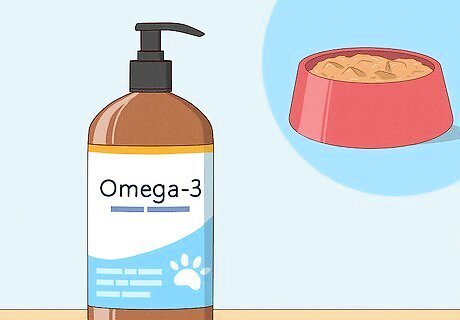
Give your dog an omega-3 fatty acid supplement twice a day. Supplements like fish oil and krill oil contain high amounts of omega-3s, which may increase metabolic rate and shrink fatty tumors. If your dog weighs 50 lb (23 kg) or less, go with a 500 mg dose twice a day. If your dog weighs more than 50 lb (23 kg), go with 1,000 mg twice daily. Fish oil and krill oil supplements come in liquid, capsule, and soft chew formulas. If you use the liquid variety, just squirt it on your dog’s wet food and mix it in. For capsules, wrap the dose up in your dog's favorite treat. You can feed flavored soft chews to your dog just like a treat. Monitor the size of the growth every few days. Hopefully, you’ll start seeing benefits within a few weeks.
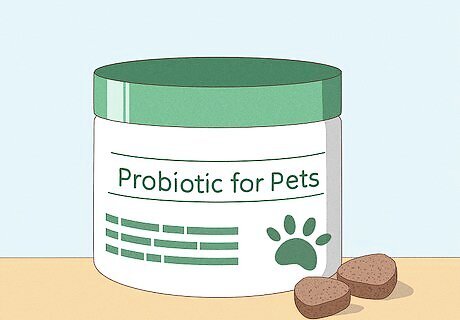
Add probiotic supplements to your dog’s diet. Any kind of probiotic supplement can boost your dog’s immune system and support weight loss, resulting in fatty tumor shrinkage. Mifloran is a particular type of soil-borne organism probiotic that may be particularly effective for shrinking lipomas. Follow the product’s instructions for dosage amount.
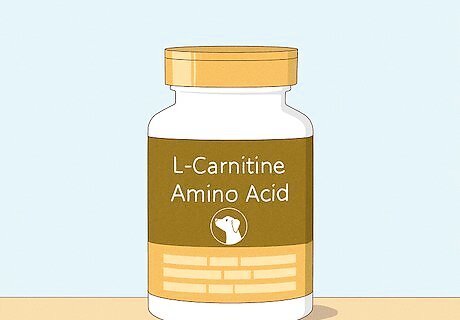
Feed your dog an L-carnitine amino acid supplement twice daily. L-carnitine can help to naturally boost your dog’s metabolism, resulting in lipoma shrinkage. If your dog weighs 50 lb (23 kg) or less, give your dog 500 mg of L-carnitine twice a day. If your dog weighs more than 50 lb (23 kg), go with 1,000 mg twice daily.

Brew ⁄2 cup (120 ml) of green tea for your dog twice a day. Just brew the green tea the same way you would for yourself, and then let it cool completely before giving it to your dog. ⁄2 cup (120 ml) is the perfect dose for dogs that are 50 lb (23 kg) and under. For dogs over 50 lb (23 kg), go with 1 cup (240 ml) of green tea twice a day. Try giving the green tea to your dog plain (some dogs like the taste). If your dog seems hesitant, mix the green tea into its water bowl and see if that helps. Be sure to offer your dog plenty of fresh water, as well. It's important that your dog stay hydrated and green tea is only meant to supplement your dog's fresh water intake (not replace it).

Feed your dog a high-quality diet with plenty of lean protein. Processed kibble contains preservatives and carbohydrates that are hard for your dog’s body to process (especially as your dog ages). If your dog loves kibble, go with a quality organic kibble that’s high in protein. You can cook chicken livers at home and feed them to your dog. Chicken liver is high in protein but also high in fat, so give your dog a single serving 1-2 times per week as a special treat. A single serving for small dogs is 10–15 grams (0.35–0.53 oz). For medium dogs, it's 25–30 grams (0.88–1.06 oz). Large dogs can have 40–60 grams (1.4–2.1 oz) per serving.

Walk your dog more frequently and incorporate daily exercise. Increasing your dog’s daily activity can help support weight loss. If your dog is older, it may not be willing to play and exercise as much as it used to (which is normal). Most older dogs will love going on additional walks, though! Do what you can to incorporate more physical activity into your dog’s daily routine.




















Comments
0 comment